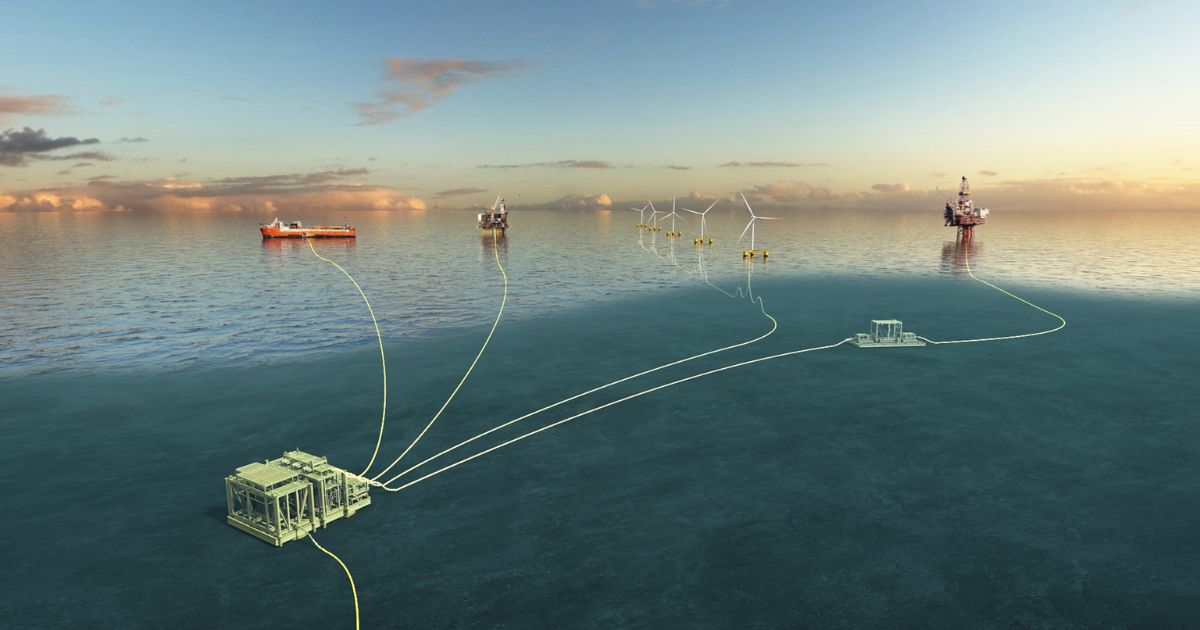Oil and gas extraction on the Norwegian Continental Shelf accounts for 27 percent of the country’s total CO2 emissions.
Regulatory pressure in the form of carbon taxes as well as corporate sustainability objectives are accelerating emission reduction projects. Aker Solutions has the technology and expertise to shift offshore installations away from using gas turbines for operation to using clean electric power with power from shore or from offshore wind. The results are massive reductions in CO2 emissions and costs associated with carbon taxes.
Aker Solutions has recently launched its Climate Action Plan to embed sustainability into operations and is currently involved in several electrification studies and projects with a CO2 reduction potential of over 1 million metric tons per year.
Challenge
The oil and gas industry is a large emitter of CO2. Offshore installations use gas turbines to generate electricity, but it is possible to tap into onshore electricity supply or link to offshore wind turbines.
Most of the electricity generated in Norway comes from hydro plants, which have zero emissions, making this a clean source of power. The Norwegian government has imposed severe CO2 taxes, which provide a financial incentive for this transition. Together with oil companies, they have set a goal to reduce the offshore emissions by 50 percent in 2030. This ambitious target requires immediate action and ready to use technology.
Approach
Aker Solutions has extensive experience and skills to execute electrification projects. We delivered our first power-from-shore project in 1996 for the world's largest offshore gas platform, Troll A. In 2015, our innovative all-electric subsea gas compression technology was first implemented at the Åsgard field in Norway.
We have expertise and products for subsea installations and cables, offshore wind, as well as engineering design and implementation both offshore and onshore. Aker Solutions has broad technical expertise across the entire value chain, and we utilize our experience as a holistic system integrator for the electrification projects.
We evaluate options like electrification by subsea cables connected to the onshore grid, to offshore wind power, or a combination of both. Offshore wind power solutions also allow for the possibility to transfer power back to the onshore grid. Critical parameters that affect the viability of electrification solutions include the weight and space allowance of the platform.
Aker Solutions can implement subsea solutions where the constraints on the platform prevent the use of surface level equipment, as well as reduce CO2 emissions and the cost level significantly.
Outcome
Aker Solutions is currently involved in several electrification studies and projects with a CO2 reduction potential of over 1 million metric tons per year.
Some examples are:
- Troll West Electrification: 500,000 metric tons per year
- Edvard Grieg, electrical boilers: 200,000 metric tons per year
- Njord Electrification: 120,000 metric tons per year
- Draugen, power from shore: 180,000 metric tons per year
Electrification is also a key enabler for achieving Aker Solutions’ own energy transition targets where one third of our revenue shall come from renewables and transitional solutions and projects by 2025 and two thirds by 2030.


